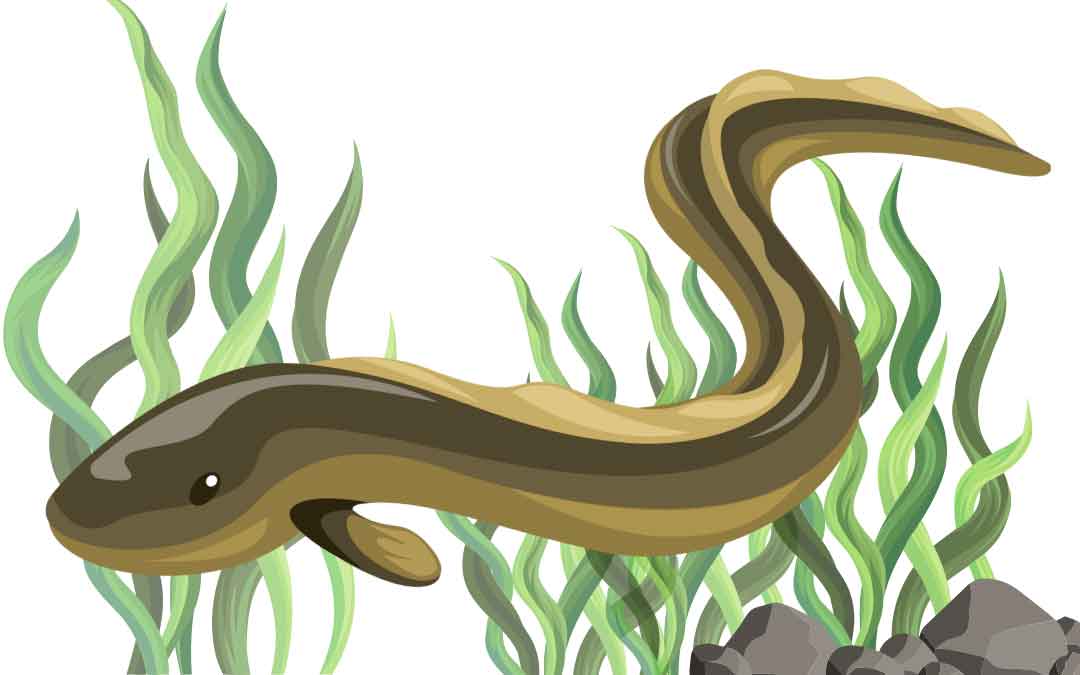The epic migrations of our local eels

The Birrarung (Yarra River) is home to the much-maligned, but fascinating short-finned eel (Anguilla australis). These unremarkable-looking eels make two epic migration journeys, spanning thousands of kilometers.
Short-finned eels begin their lives in the Coral Sea (between northern Queensland, PNG, New Caledonia and Vanuatu), where they hatch from eggs.
The larvae drift on ocean currents for several months before reaching the estuaries and rivers of southeastern Australia, including the Yarra River. Somehow they make it back unaccompanied – yet another remarkable feat by these creatures!
Once in freshwater, the larvae transform into ‘glass eels’, which are transparent (and sold as a delicacy in Spain that I ate years ago without knowing what they were). They make their way upstream and are common in the river and the remaining billabongs of the Birrarung, including the ones around Heidelberg, Lower Plenty and Bulleen. As they grow, they become ‘elvers’ and eventually mature into adult eels. This process can take several years, with males maturing at around 8-12 years and females at 10-20 years.
Pre-colonisation, these Birrarung billabongs formed natural eel traps for the people of the Kulin nations (and for Aboriginal people in areas right across southern Australia). When the river flow reduced, the billabongs became shallower and cut off from the river, the eels were trapped and easy to catch. Eels hold significant cultural and spiritual importance for the Wurundjeri people. Known as ‘iuk,’ they are considered sacred and are seen as spiritual protectors. They are also a vital food source, especially during the eel season in March when they migrate downstream towards the sea.
During their time in the river, eels are nocturnal and feed on insects, crustaceans, molluscs, small fish and water plants. They appear to be able to hibernate or at least stop needing food if the water gets too cold, with reports of them going up to 10 months without eating.
The epic migration begins – again
As eels reach maturity, they undergo significant physiological changes to prepare for their long migration. Their eyes enlarge, their bodies become more streamlined, and their digestive systems shut down as they stop feeding.
Each summer mature eels begin their journey from the Yarra River to the Coral Sea. This migration covers approximately 3,000 kilometres and can take several months. Eels navigate through rivers, estuaries, and the open ocean, sometimes even travelling short distances over land to reach waterways that lead to the sea. Tracking has shown some individual eels head south, and go around Tasmania before heading north to the Coral Sea. It’s thought that this gets them to deeper water quicker. This likely helps them avoid predators and regulate their body temperature.
During their migration, eels continue to move up and down the water column in the ocean. They travel at extraordinary depths of 700-900 metres during the day and 100-300 metres at night.
Upon reaching the Coral Sea, the eels spawn in deep ocean waters. The exact spawning locations remain a mystery to scientists. After spawning, the adult eels die. The new generation of larvae then begins the journey back south to our rivers, including the Birrarung, starting the cycle again.
Importance and conservation
Eels play a crucial role in the ecosystem of the Yarra River. They are both predators and prey, contributing to the balance of aquatic life. Their migration also helps transport nutrients between marine and freshwater environments.
Researchers, like those at the Arthur Rylah Institute (in Heidelberg), are working to track and study eels to better understand their migration patterns and develop conservation strategies.
The short-finned eel might look slimy and some might say unloveable: but they are remarkable creatures with a unique lifecycle and an epic migration journey. Understanding and protecting these eels is essential for maintaining the health of our river’s ecosystem.
References & further reading:
Tracking eel migration using satellites: Understanding the migration of eels from freshwater to the Coral Sea.
Written by Jen Willis
